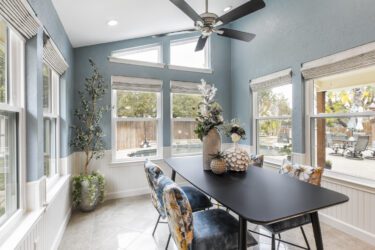When you are planning a large remodeling project, you should be offered a well-written proposal from a Professional Remodeling Contractor. The idea is that the proposal answers all the questions and leaves no assumptions. It is important that you understand the terms your Professional Remodeling Contractor is using. Understanding this terminology will help you feel more confident as the project develops, and will ensure you get what you are expecting without any big surprises.
Here is a list of terms that will come up as a project evolves:
Proposal: A well-written proposal will have a Scope of Work, Specification Details, Time Lines, Guarantees, Cost of Project Labor and Installation Materials, Budget Items, Payment Outline, Change Order Agreement, a Not Included Statement, a License and Insurance Statement, and a Permit Statement.
Scope of Work: The Scope of Work is big-picture statement that gives the general overview of a project, and guidance towards the specific items of the project. Here are a couple of examples:
- “Remodel Kitchen per Specifications and Final Design”
- “Build a second story room addition per Specifications and Final Design”
- “Remodel Den, Master Bedroom and Laundry Room per Specifications and Final Design”
Specifications: The specifications should clearly identify and detail the processes for the project. In most big remodeling projects, the processes are generally Design, Permits, Demolition, Framing, Electrical, Plumbing, HVAC, Insulation, Drywall, Trim, Paint, and Flooring. The detail of work should be clearly spelled out in each phase so there isn’t any guessing of what to expect while the project is underway.
Final Design: The Proposal of a more complex project may mention Final Design, or Final Plans that will be created after the proposal is accepted. The Final Design typically addresses the finished surfaces such as floors, cabinets, counter tops, and tile, as well as the electrical and plumbing fixtures. Budgets are assigned to these design items so a maximum anticipated price can be established.
Not Included Statement: This usually states “Anything not specifically mentioned in the specifications or the final design is not included.” This should be a wakeup call to you make sure every question you can come up with is answered in the Proposal.
Budget Items: From the initial interviews with you, your Professional Remodeling Contractor will have a good sense of the product style you want to use. From their experience, they can budget enough money to cover the cost of the Budget Items. If your contractor is a fair person, he or she will budget high so you will have the pleasant surprise of the project coming in under the maximum anticipated price, rather than the stress of continually being told throughout the project everything is costing more than budgeted for, and spending more than you had anticipated.
Cost of Labor and Installation Materials: The proposal should have a guaranteed price for the Cost of Labor and Installation Materials. This covers everything except the budget items. Providing the Scope of Work doesn’t change, it should be a fixed number.
Change Orders: A change order is initiated when the homeowner requests a change to the Scope of Work, Specifications, or Budget Items after the project has started. The cost and payment of Change orders should be dealt with as they happen. Change orders are a common trouble maker between Contractors and Homeowners if they are left to be dealt with at the end of the project.
Payment Outline: The payments should be balanced with the work so neither the homeowner nor the contractor get too far upside down with their commitments. Payments should be collected in person by one of the lead people on the project at milestones such as foundation installation, drywall texture, completion of painting, etc. Make sure the payment structure is crystal clear and don’t give up the payment unless you are happy.
Time Line: The time line should spell out how many weeks the project will take, and what is planned to be done in those weeks. It should also state the days of the weeks and the hours of the day work will be performed at your home.
Guarantee: Most guarantees are one or two years. Most any problem will show up in the first year.
Lien Releases: A lien release releases the homeowner from any further obligation to the contract. This protects you from the contractor, his employees, and suppliers from coming back later and claiming they haven’t been paid.
If you are looking at a proposal and are unsure, don’t hesitate to ask someone you trust to review the proposal with you, or for you. Don’t forget to call the contractor’s references and ask if they were happy with their project and if it came under budget and got done in the time promised. This is the best way to be sure you are dealing with someone who does what they say they are going to do.
Best of luck with your home remodeling project,
Mike








